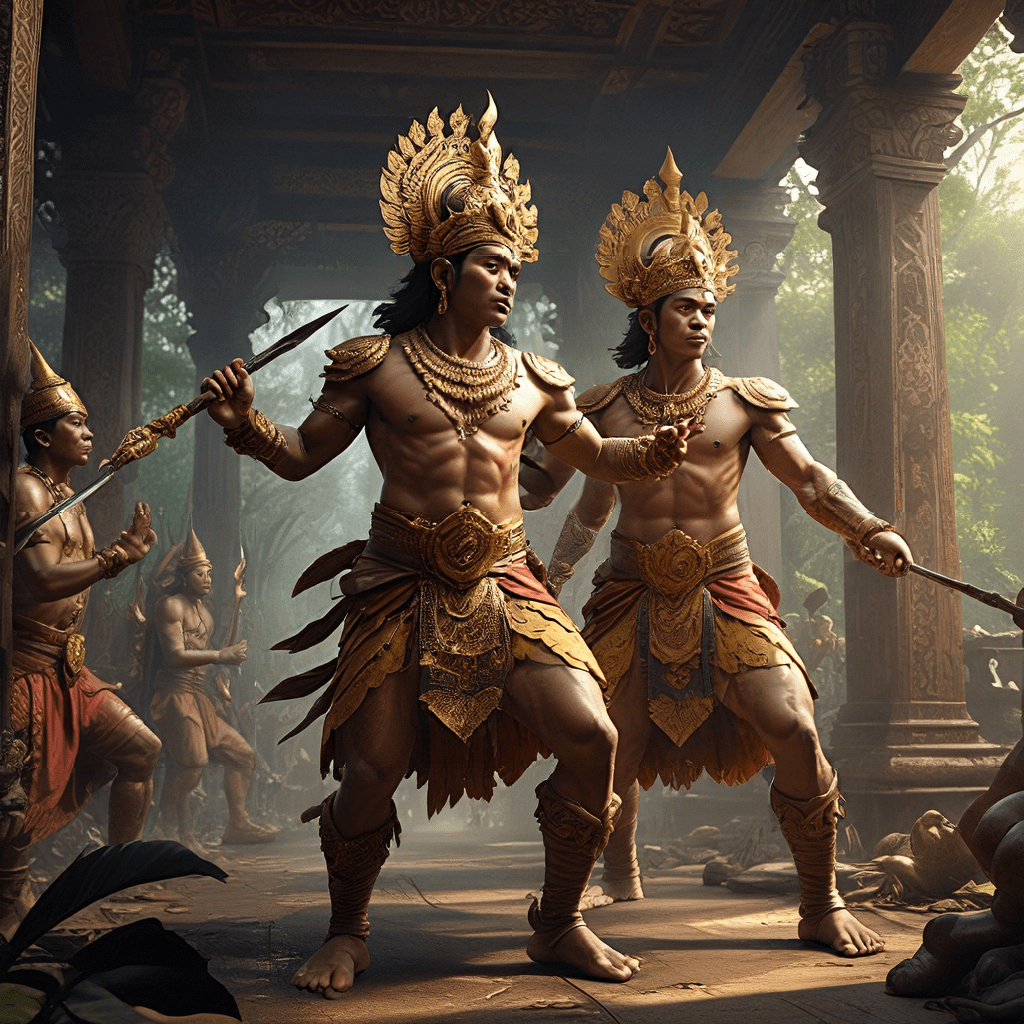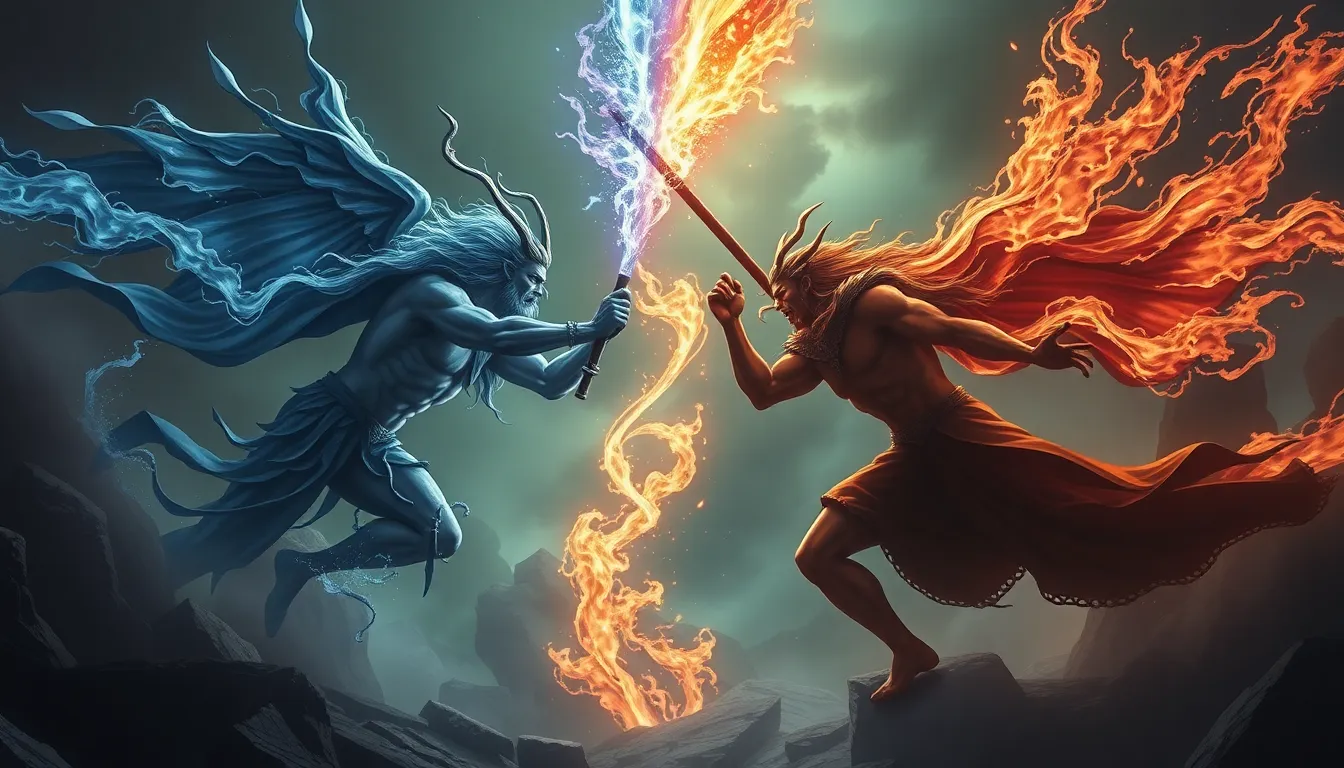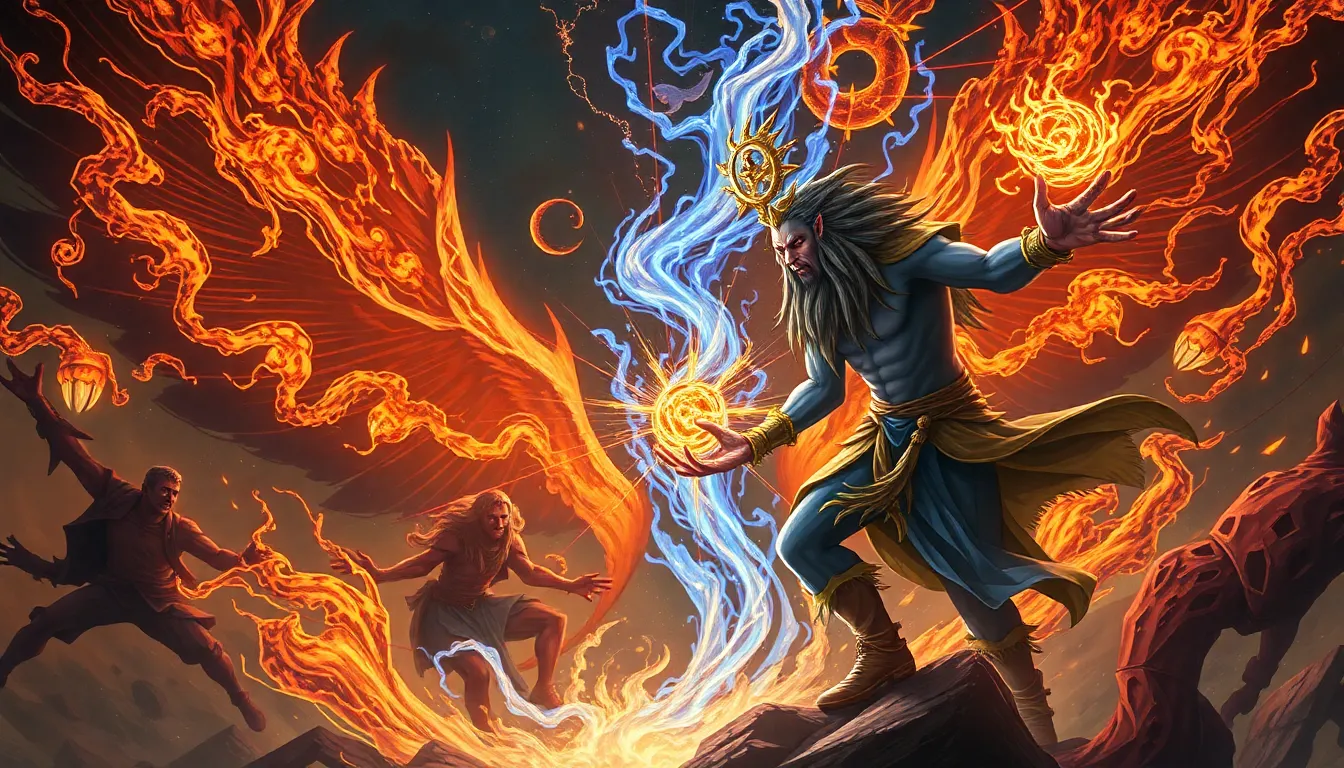Indonesian Mythology: A Tapestry of Legends
Indonesia, a vast archipelago with thousands of islands, is home to a rich tapestry of myths and legends. These stories, passed down through generations, offer insights into the beliefs, values, and history of the Indonesian people. They are not merely tales for entertainment; they are expressions of cultural identity, explaining the origins of the world, natural phenomena, and even social structures. From stories of creation to tales of powerful gods and mythical creatures, Indonesian mythology offers a window into the soul of this diverse nation.
Unity through Shared Ancestry: The Myth of Batara Guru
One of the central figures in Indonesian mythology is Batara Guru, the supreme god. He is often portrayed as a wise and benevolent ruler, embodying the concept of divine order and justice. Batara Guru's role in creation myths is significant. He is credited with shaping the world and bringing forth the first humans. This shared ancestry, as told in these myths, fosters a sense of unity among Indonesians, regardless of their diverse cultural and ethnic backgrounds. The belief in a common creator connects people across the archipelago, highlighting a shared history and destiny. These myths reinforce the idea that despite differences, Indonesians are united through their connection to the divine.
The Origin of Diversity: The Tale of the Seven Islands
While Batara Guru's creation myth emphasizes unity, other myths explore the origins of diversity. One such tale is the story of the seven islands. According to this legend, the Indonesian archipelago was originally a single vast island, ruled by a powerful king. The king had seven daughters, each representing a different aspect of nature. One day, the king decided to divide his kingdom among his daughters. He used a magical staff to separate the land into seven islands, each ruled by one of his daughters. This myth beautifully explains the diverse cultures and languages found across Indonesia. Each island, with its unique ruler, developed its own traditions and customs, creating the rich cultural mosaic seen today.
The Legend of the Garuda: Symbol of Power and Protection
Among the numerous mythical creatures in Indonesian mythology, the Garuda stands out. This powerful bird, with a human face and golden wings, is the mount of the god Vishnu. In Indonesian folklore, the Garuda is often depicted as a protector of humanity, fighting evil forces and upholding righteousness. The Garuda represents strength, wisdom, and the power to overcome adversity. As a symbol of power and protection, the Garuda has been adopted as a national symbol in Indonesia, appearing on the national emblem and in many traditional art forms.
The Curse of the White Elephant: A Tale of Hubris and Division
Indonesian mythology is not just about unity; it also explores themes of conflict and division. One such tale is the curse of the white elephant. This story revolves around a king who was known for his pride and arrogance. He boasted about his power and wealth, angering the gods. As punishment, the gods sent a white elephant, a symbol of power and wisdom, to the king's kingdom. However, the king's arrogance led him to mistreat the sacred animal. The gods, angered by the king's disrespect, cursed him and his kingdom, leading to division and strife. This myth serves as a cautionary tale, highlighting the dangers of pride and the importance of humility. It also emphasizes the consequences of disrespecting the divine, reminding people of the importance of living in harmony with the natural world.
Mythological Explanations for Natural Phenomena
Indonesian mythology also provides explanations for natural phenomena. These stories often depict the actions of gods and mythical creatures, weaving together natural occurrences with spiritual beliefs. For instance, the eruption of volcanoes is sometimes attributed to the anger of a powerful deity, a reminder of the awe-inspiring power of nature. The crashing waves of the ocean are often explained as the wrath of a sea goddess, showcasing both the beauty and the danger of the sea. These stories not only explain natural events but also emphasize the interconnectedness of humans and the environment, emphasizing the need for respect and harmony with nature.
The Role of Myth in Shaping Indonesian Identity
Indonesian myths play a vital role in shaping the nation's identity. These stories, passed down through generations, preserve cultural values, beliefs, and traditions. They serve as a window into the rich history and heritage of the Indonesian people, connecting them to their ancestors and fostering a sense of shared cultural identity.
Mythology provides a framework for understanding the world and one's place within it. These stories offer moral guidance, teach about right and wrong, and reinforce societal values. The characters and themes in Indonesian myths often represent ideals such as strength, wisdom, courage, and justice, inspiring people to strive for a better society.
The Influence of Hinduism and Buddhism on Indonesian Mythology
Indonesian mythology is deeply influenced by Hinduism and Buddhism, religions that have been present in the archipelago for centuries. The myths often feature Hindu gods and goddesses, like Shiva, Vishnu, and Brahma, along with concepts like karma, reincarnation, and dharma. These influences are evident in the stories about creation, the afterlife, and the journey of the soul. Buddhism, with its emphasis on compassion and non-violence, has also left its mark on Indonesian mythology, particularly in stories about virtue, morality, and the pursuit of enlightenment.
These religious influences have shaped the values and beliefs of Indonesian people, influencing the way they view the world and their place within it. Indonesian mythology, therefore, serves as a bridge between tradition and faith, offering a unique perspective on the human condition.
Modern Interpretations and Adaptations of Indonesian Legends
Indonesian legends are not static traditions; they continue to evolve with the times. Modern artists, writers, and filmmakers have reinterpreted these stories, infusing them with contemporary themes and perspectives. These adaptations breathe new life into the ancient myths, making them relevant to a modern audience. Some stories have been reimagined as novels, films, and even video games, showcasing the enduring appeal of these ancient tales. By adapting them to modern contexts, Indonesians are able to find fresh meaning and relevance in their rich heritage.
Mythology as a Source of Inspiration for Art and Literature
Indonesian mythology offers a rich source of inspiration for artists and writers. The stories, characters, and imagery in these myths have been incorporated into various art forms, including dance, music, painting, and literature. The vibrant colors, fantastical creatures, and epic tales of gods and heroes have served as a catalyst for creativity, enriching Indonesia's artistic landscape.
The power of these myths lies in their capacity to capture the imagination and transport audiences to a world beyond the ordinary. They spark creativity, inspire awe, and offer a glimpse into the soul of the Indonesian people. From ancient carvings to modern paintings, the influence of mythology is evident throughout the Indonesian cultural landscape.
FAQ
What are the key themes in Indonesian mythology?
Indonesian mythology explores themes of creation, unity, diversity, power, protection, conflict, division, respect for nature, the importance of virtue and morality, and the impact of faith on everyday life.
How does Indonesian mythology reflect the country's diversity?
The diverse cultures and languages across Indonesia are often explained by myths like the "Tale of the Seven Islands," where each island is ruled by a different daughter of a powerful king, representing the unique traditions and identities found across the archipelago.
How has Indonesian mythology adapted to modern times?
Modern artists, writers, and filmmakers have reinterpreted Indonesian myths, infusing them with contemporary themes and perspectives. These adaptations, through novels, films, and even video games, showcase the enduring appeal of these ancient tales and their relevance to modern audiences.
What is the significance of the Garuda in Indonesian mythology?
The Garuda is a powerful bird, symbolizing strength, wisdom, and protection. Its significance is seen in its adoption as a national symbol, appearing on the national emblem and in traditional art forms.
What role does mythology play in shaping Indonesian identity?
Indonesian myths preserve cultural values, beliefs, and traditions, offering a glimpse into the rich history and heritage of the people. They connect Indonesians to their ancestors, foster a sense of shared cultural identity, and provide moral guidance for navigating the world.



